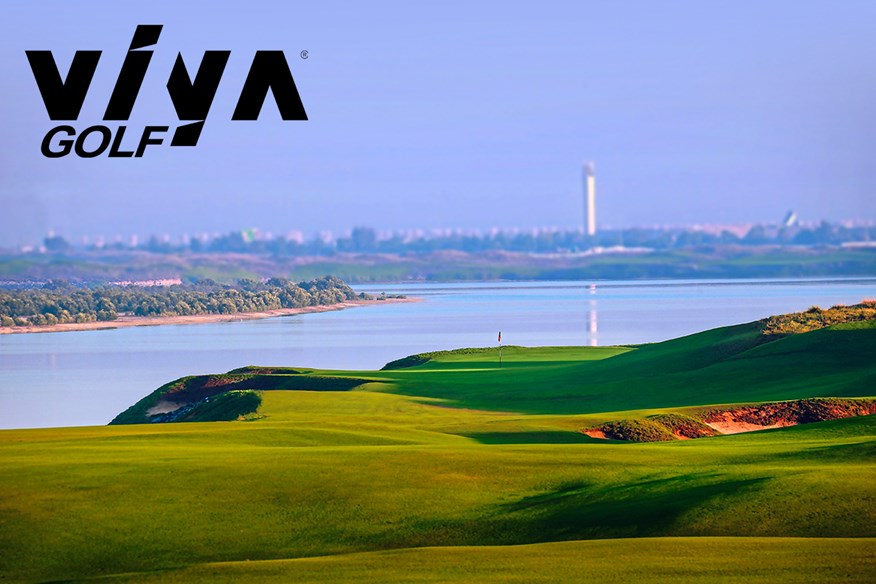The absolute 100 best golf courses in the Middle East & North Africa
Last updated:
The winter sun ranking. Our comprehensive travel guide to get the most from your sun-kissed October-March trip
Book your Dubai and Abu Dhabi tee times with Viya Golf
Regular readers will realize I regularly change the way our Top 100s are presented. This is not done on a whim, but based on what I think is the optimum way to give the most information to you.
This month, I’m doing it as a series of travel features with the ranking following at the end. The list itself is naturally important and will hopefully be a helpful guide to planning a trip to one or more of the countries covered here, all of which are perfect winter sun destinations.
But because they are a little further afield and might be roads less well-traveled for some readers, I thought that a sense of what to expect from these areas and countries would be useful.
I have been to 61 of the 80 courses ranked, with my biggest gaps in Tunisia and some of the lower-ranked Egyptian courses. There is very little I haven’t seen in the Middle East and Morocco, so I’m writing these guides from a position of some experience.

I love this part of the world. Clearly, it varies a lot – from the idyllic beaches of Saadiyat Beach to the hustle of Marrakesh, and the skyscrapers of Dubai to the dreamy Red Sea coast of Egypt – but the common theme is outstanding golf.
As a guide to the quality of the courses, I’d say the top 30 of this ranking would get in the Continental European Top 200. Therefore, although these courses are generally fairly new and in countries with minimal golf pedigree, they are very good indeed.
While my widespread experience of the region meant I was a strong voice in terms of the ranking, I had plenty of input, notably but not exclusively from Paul Dennis, Lloyd Walton, Paul Lacey, Fergal O’Shea, Steve Thomas, Tom Buchanan, Shane Peacock, and James Motley.
I hope you enjoy the guide, and get in touch if you have knowledge of the courses in these areas.
Chris Bertram, Top 100 Editor
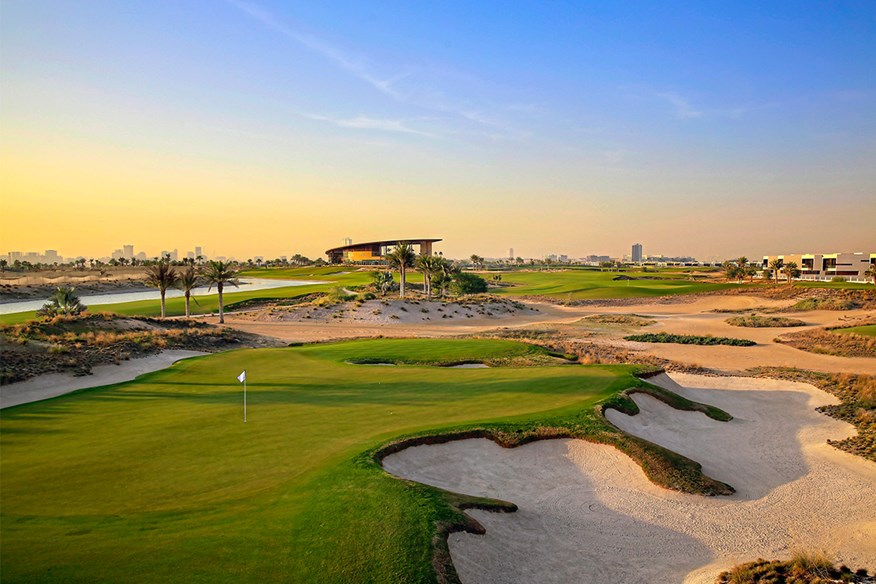
Ultimate guide to Dubai
The liveliest of the United Arab Emirates is also the one with the largest number of golf courses – as well as many of the best.
Visiting it is possibly an intimidating prospect to some, given factors such as its size, prices, and reputation as a busy, party city. There is no reason to be wary of it though and hopefully, our guide will take away any concern while showing you can plan a trip on a decent budget yet enjoy incredibly high quality.
Dubai is super safe, populated almost exclusively by friendly ex-pats, and easy to get around whether in a hire car (take it from someone who has driven around the city a lot) or a cheap taxi. It is undeniably busy though, so if a lively atmosphere isn’t for you and you want to avoid traffic, look elsewhere in the Middle East.
I don’t necessarily want a ‘buzzy’ atmosphere and never relish battling through traffic, but I definitely wouldn’t let the thought of either of these elements put you off; Dubai is the chameleon of the MENA region and can give you absolutely whatever you want from your stay.
And, without question, its range of courses is the best in the region. The Majlis course at Emirates is the best known by virtue of it hosting the Dubai Desert Classic each year.
It was not just one of the first courses built in the region but also one of the first big developments, as that famous picture of a course and little around it from the 1990s will always remind us.
It is a Karl Litten design with an emphasis on traditional architectural values rather than an explosive American style. It is characterized by nice elevation changes, mature trees, neat shrubs, and of course THAT view down the 8th. It’s a true ‘I was there’ picture for every golfer visiting Dubai.
It was the clear No.1 in Dubai for many years but now has stiff competition, notably from The Els Club and Trump Dubai. The former is laid out on an undulating topography of wide fairways, waving wispy rough, and minimal trees and foliage.
You need a good short game here because the greens are huge and are four-putt territory when really quick, while there are lots of acute run-offs. Locals have noted its exceptional conditioning.
Gil Hanse’s cerebral design at Trump Dubai splits opinion a little. Some absolutely love it and would have had it in the top three comfortably, but some stronger players seem less keen on its emphasis of wide fairways and angles of approach.
The celebrated American architect has certainly produced a typically clever and nuanced course, one characterized by short grass – with greens running seamlessly into the next tee – and sandy waste areas, which look as natural as you would expect they would on a desert course. I personally find it fun, entertaining, and playable yet stimulating and unquestionably challenging.
Jumeirah Golf Estates (Earth), home to the DP World Tour Championship, is everything you would expect from a big-budget championship course.
This Greg Norman design has fairways punctuated by white-sand bunkers and framed by deep-red ochre borders, mature trees, and shrubs. It is a serious test.
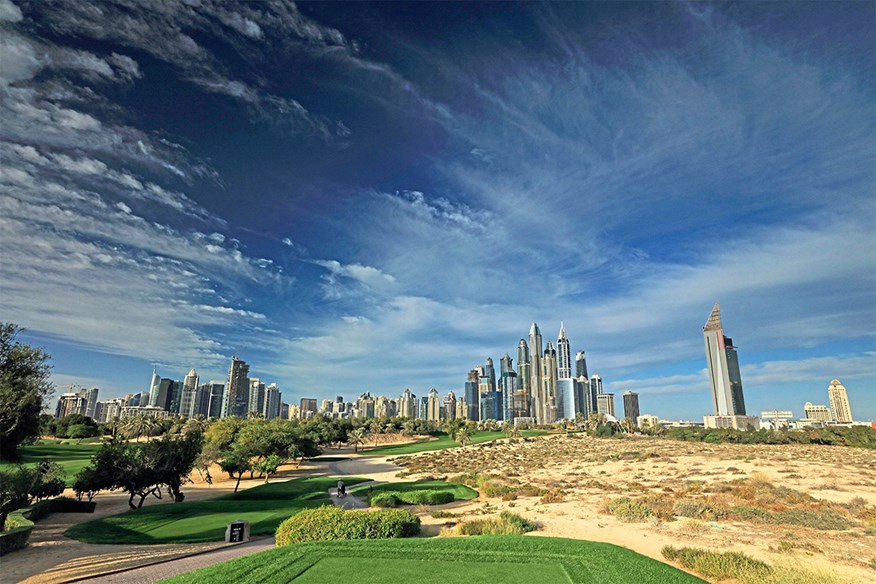
Dubai Creek opened in 1993 and like Emirates GC, has an iconic clubhouse, its design mirroring the sails of an Arab dhow boat.
It has hosted two Dubai Desert Classics and its location overlooking the creek and marina means it was difficult not to end up with a fairly spectacular course. The creek is in play on four holes and the climax is arguably the best stretch in the whole region.
Dubai Hills is the most recent addition to the emirate and I would definitely put it in the top tier along with the Majlis, Els, Trump, Earth, and Creek.
Created by Gary Johnstone of European Golf Design, it manages that rare feat of challenging the strong player while remaining playable for higher handicaps. An all-world view of the Burj Khalifa is your constant backdrop as you play the 5th.
The Fire is regarded as the No.2 at Jumeirah Golf Estates but there are not loads in it and at least one panelist likes it more. Another very solid modern test, it starts strongly and is a little more forgiving than the Earth.
Arabian Ranches was originally extremely tough, set down with paspalum grass that bounced your ball into the rough or the desert a lot if you missed its fairways. That has now been cleaned out so it is not so exacting or time-consuming now. It has a ‘linksy’, flattish look. For me, it’s the leader of the next tier of courses here.
Emirates (Faldo) opened in 1996 and was originally nine holes named ‘The Wadi’ – from the Arabic word for ‘valley’ – but it was re-designed significantly in 2005 by Sir Nick, hence the name. The wadi runs the length of the course and is in play without being classified as a hazard.
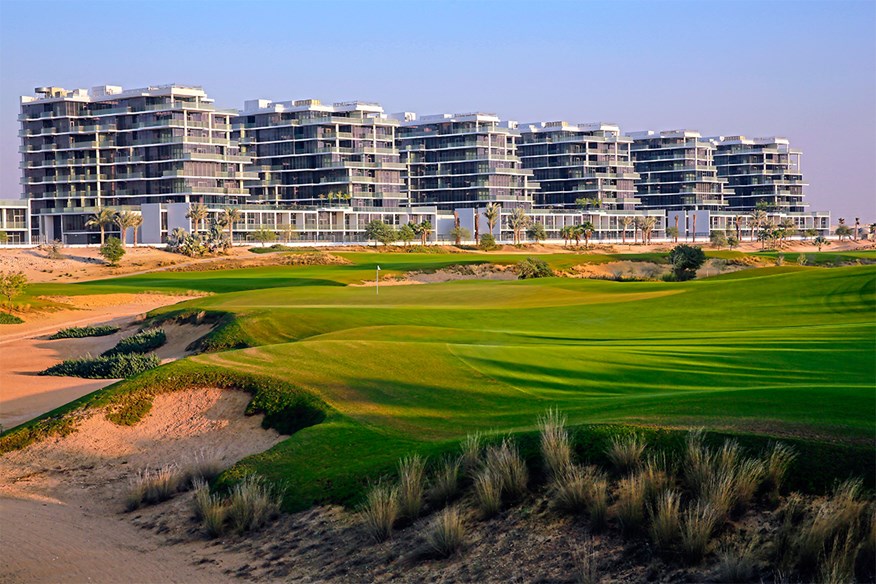
Address Montgomerie is the most forgiving course in the UAE. There isn’t much rough and it’s there to enjoy and flatter rather than flex its muscles. It does finish with a strong par 5 though, asking you to drive over water off the tee, while the other notable hole is the par-3 13th that has an island green (sitting in one of 14 lakes) in the shape of the UAE.
Track Meydan is another nine, this time set among the race course. It’s floodlit, not expensive, and very close to downtown. There are nice views of the race track, it is in good condition and has a bit of water and enough trees to provide some definition.
And Jebel Ali is yet another nine-holer, this time designed by locally-based Peter Harradine. He had a limited amount of land to work with, so it has smallish fairways and smallish greens, but it’s not punishing on yardage. The players have long stayed here during the week of the Desert Classic.
Your off-course guide
Where to stay
Here are two great options that will cater to every type of traveller; a super hotel, Radisson Damac Hills, and an apartment sourced through Staycae UAE.
The Radisson is based 20 minutes inland from the famous Palm and Marina areas, and as it happens, so was our apartment – but Staycae UAE have properties to rent in other parts of the city too.
The Radisson was a faultless base, and it’s not often we can say that. Whether it was the varied breakfast, the rooftop pool, the comfortable rooms, or the friendliest staff in a city of friendly staff, it put a big tick in the box.
Its rooms are spacious and comfortable, there is a well-equipped gym and open-air sports on a huge LED TV in the garden. You’ll eat well here, with the Fire Lake Grill House offering dishes as succulent as its name suggests, Hessa Street Kitchen serving Pan-Asian dishes after its terrific breakfasts, and tasty burgers and snacks at the Pool Deck.
It’s a 4-star affair but feels closer to 5-star standard in European terms. Oh, and it overlooks Trump Dubai and is convenient for all the key courses in the city. www.radissonhotels.com
If an apartment with a self-catering element appeals, check out www.staycae.ae Our apartment also had a superb view of Trump Dubai and was chic, spacious, and well-equipped. It is perfect for families who want to stay together and while you may well want to eat out in the evening – you’re on holiday after all! – breakfast and lunch are easily prepared in the kitchen and enjoyed on the balcony.
Even a one-bed apartment felt spacious, with room for a sofa bed in the large living area, a high-end kitchen, a main bathroom, and a WC. It also has lots of off-road parking and a gym in a neighboring block. We rated it very highly.
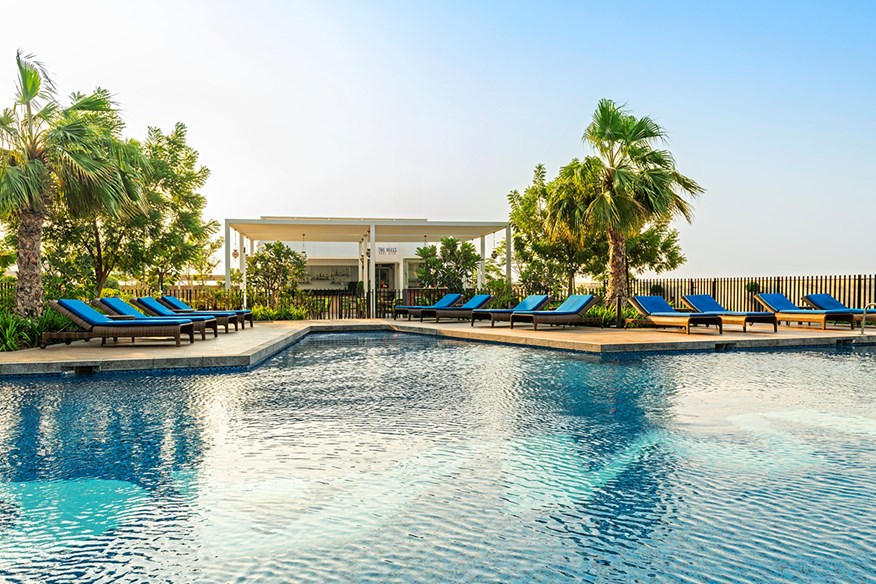
Where to eat
You simply can’t eat poorly in the UAE; whatever your budget or taste, you are exceptionally well-catered for.
Cheap eats, delicious sushi, amazing pizza, fast food you’ve only ever seen on TikTok, specialist vegetarian restaurants, incredible Lebanese meats and falafel… it’s all here and more.
If you want a British pub experience with amazing food and sports on TV, head to Mr Toad’s Pub & Kitchen (there are several branches, we went to Dubai Investment Park as it is close to Radisson Damac Hills). They are attached to Premier Inns but, trust us, this is a long way from the carvery equivalents in the UK, because the food is absolutely superb.
Tuck into BBQ chicken wings or pulled beef sliders to start then move onto a steak, peri peri chicken, one of their burgers, or a truly sensational chicken pie. The brownie is essential to finish – and they’ll be showing whatever sport you want to watch on one of the many TVs.
The milkshakes are also out of this world and you’ve got a good choice of ‘hops and grapes’, as they say in the UAE.
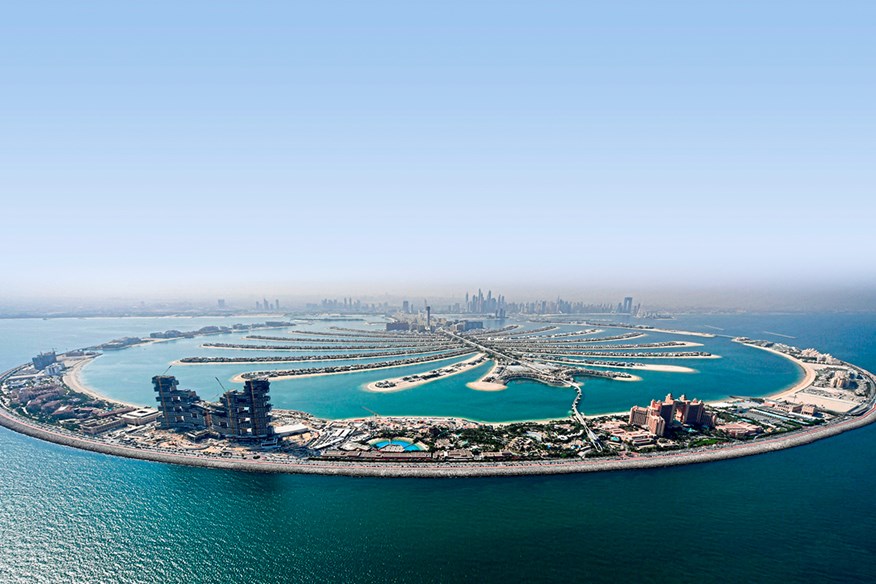
Where to have fun
Atlantis The Palm’s waterpark is not cheap at £80 entry, but it’s worth a blow-out if you’re traveling with kids. It can get very busy so a fast pass is worthwhile, or you can just wait ’til 5 pm, an hour before closing when people are drifting away, and blitz seven rides in a short time!
‘DUBAI HILLS IS THE EMIRATE’S MOST RECENT ADDITION AND SITS IN THE TOP TIER OF COURSES’
We also loved TopGolf Dubai, which felt even more non-golfer-friendly than the UK versions. It could be the warmth of the night-time air temperature or the dazzle of the skyscraper backdrop, but it just felt more glitzy and glamorous to whack balls at the neon targets on a balmy evening. It’s so inclusive for non-golfers and is guaranteed fun for everyone. And if everyone in your party is a golfer, it will get brilliantly competitive!
The service is superb and we ate here too, and were not disappointed. All of our group – only half of whom were golfers – wanted to go back for a second evening.
The low-down
Heathrow, Manchester, Birmingham, Newcastle, Edinburgh, and Glasgow fly directly to DXB but consider a change in Istanbul with Turkish Airlines for a better price.
If you take our accommodation advice, research deals at courses, and book ahead with flights and car hire – it can save hundreds of pounds. A hire car is not essential though – taxis are very cheap.
Mid-June to mid-September is seriously warm. October to December and mid-February to May are perfect. January is still warm but it can be cloudy and relatively cold at 18°C.
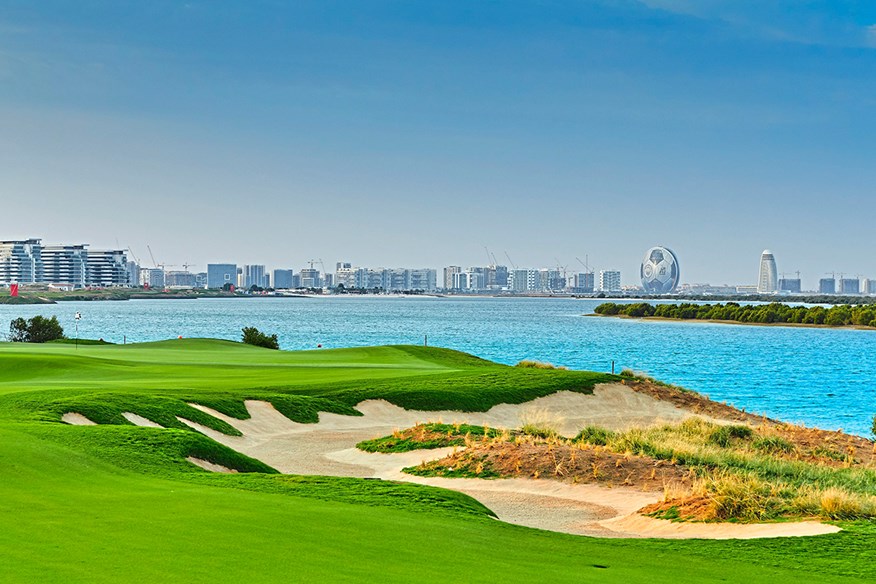
Your guide to Abu Dhabi
Abu Dhabi is sometimes thought of as the quiet neighbor of Dubai, but that is only relative. There is plenty going on in ‘AD’, as it befits the capital of the United Arab Emirates.
You won’t get traffic jams here and you can have more of an authentic experience if you want it – in Dubai, there are few Emiratis, whereas in AD 20 percent of the population is – but if you want a fun night out, it’s also waiting for you.
There is loads to do away from the golf course, ranging from Ferrari World adventure rides to Yas Waterworld, or visiting the Louvre museum to cycling around the F1 track (which is free of charge).
Abu Dhabi has the best beaches in the UAE – on Saadiyat Island – as well as idyllic stretches of sand downtown along the corniche. This beautiful long promenade hugs the coastline and is free to spend all day on.
Brunch culture – an all-you-can-eat-and-drink session from 1 pm to 4 pm on a Saturday – is a bit different from Dubai, where liquid refreshment takes precedence. Here, the food is more important. And here, the food is exceptional.
Yas Island is home to a lot of the off-course attractions and hotels, as well as the course that currently hosts the DP World Tour event. Saadiyat Island, meanwhile, has some of the UAE’s best hotels plus Mamsha Al Saadiyat, a great beachside promenade perfect for coffee and lunch, then evening dining at the exquisite Italian restaurant Antonia.
They are both very tempting options as a base but don’t dismiss the downtown city. You get its hustle and bustle, loads of fabulous cheap eats, a range of hotels and you can get to golf at Saadiyat Beach in 10 minutes and Abu Dhabi National within 20.
There is impressive consistency across the three 18-hole courses here.
Yas Links was designed by Kyle Phillips and is a fixture in our World Top 100. It is a winning combination of a terrific location – its many Gulf-edge holes are visually majestic – maximized by an excellent design. There are several all-world holes – from breathtaking par 3s and sporty two-shotters to some very demanding par 5s. As a guide, they would threaten the upper echelons of our GB and Ireland Top 100.
Saadiyat Beach has some holes that match Yas in terms of setting. This Gary Player design mixes strong, exceptionally well-bunkered holes among residences along with spectacular seaside ones.
An abundance of wildlife accompanies your round, with 150 gazelle and over 100 bird species. And its Gulf-side stretch includes one of the most breathtaking par 3s I’ve ever played.
Abu Dhabi (National) lacks the coastal thrills of the other two – rather than sea views, the backdrop to the holes are more akin to the skylines seen in Dubai – but it is a first-class technical course that was a fine and long-standing host of the European Tour event. It also has a floodlit nine-holer to extend your day.
This Peter Harradine design winds around seven saltwater hazards punctuated by palm trees, shrubs, 90 bunkers, and drystone walls, with its epic finish in front of the iconic Falcon clubhouse.
‘IN DUBAI, LIQUID REFRESHMENT TAKES PRECEDENCE. IN ABU DHABI, IT’S ALL ABOUT THE FOOD – AND THE FOOD IS JUST EXCEPTIONAL’
There are two nine-holers too. Downtown City Golf is AD’s oldest course, beginning life as a sand course in 1976 before being transformed into Abu Dhabi’s first all-grass course in 1998 by British designer Ian Scott Taylor.
In contrast, Yas Acres opened only last year but – as our ranking illustrates – has made a very good impression. It is a Fry-Straka design characterized by a meandering ridgeline that bisects the site. A lake and stream also flow throughout, with water in play on four holes.
Your off-course guide
Where to stay? On Yas, go for Crowne Plaza, with a superb pool area, an excellent sports bar (Stills), and beach access. On Saadiyat, the peerless Park Hyatt Abu Dhabi is immense, with one of the world’s greatest beaches 100 yards from the hotel plus beautiful rooms and a truly epic breakfast. Downtown, head for the Southern Sun for a lower budget option, but spectacular Emirates Palace if you want a stay-of-a-lifetime – it has my two favorite brunches in Abu Dhabi in Art Deco-inspired Broadway’s classy menu as well as elegant Sand & Koal, set right on the beach.
Getting there: The brand-new Abu Dhabi airport is more of a hub than ever, with direct flights from Heathrow and Manchester.
When to go: Mid-June to mid-September is seriously warm. October-December and mid-February to May are perfect.
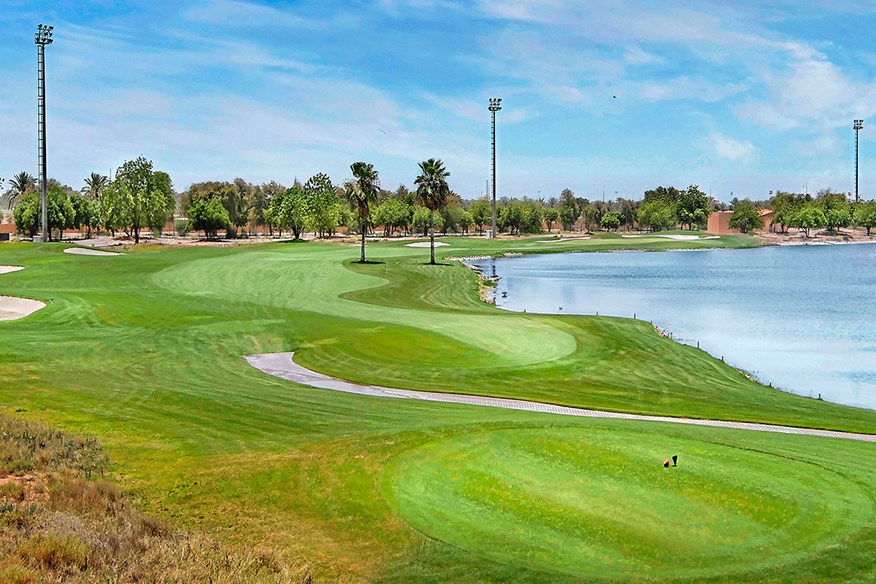
Your guide to AI AIN
Al Ain is part of Abu Dhabi but is about 90 minutes from the main city and feels distinct from the bustle of downtown and the white sand and turquoise waters of Saadiyat Island.
Here, roads are lined by beautiful hanging baskets of flowers rather than skyscrapers. For some, its sedate rhythm of life will be absolutely perfect.
We stayed at Al Ain Rotana, which has excellent rooms, an epic gym, and a super pool area perfect for lazing around with a cool drink in hand. At night, it transforms into a lovely spot for al fresco dining with fairy lights and a feeling of a Greek taverna.
There is more than enough to do here, too. You can get up close to camels in the camel market, drive up Jebel Hafeet mountain for epic views, walk around Al Ain Oasis (UAE’s version of Kew Gardens), and visit the fort.
The golf course is part of the bewilderingly well-equipped Al Ain Sports Club, home to a plethora of activities.
The course (above) was a proper revelation. It’s not a big name in the region, but it deserves to mix with the big names in the region. For a start, it was beautifully conditioned when we visited; categorically one of the best-presented courses I’ve played in the Middle East.
And secondly, it is playable, entertaining, forgiving, and fun. Water lies in wait for the errant shot but you don’t face penal consequences if you don’t hit your absolute Sunday best. It’s there to be enjoyed rather than endured. But in case you think this is just a playground for high-handicappers, think again. Al Ain is a strong enough test to be the host of several satellite tour events and delivers an interesting challenge throughout.
Its mix of holes also impressed; the landscape is similar throughout but the design means you never feel like you’re playing the same hole twice.
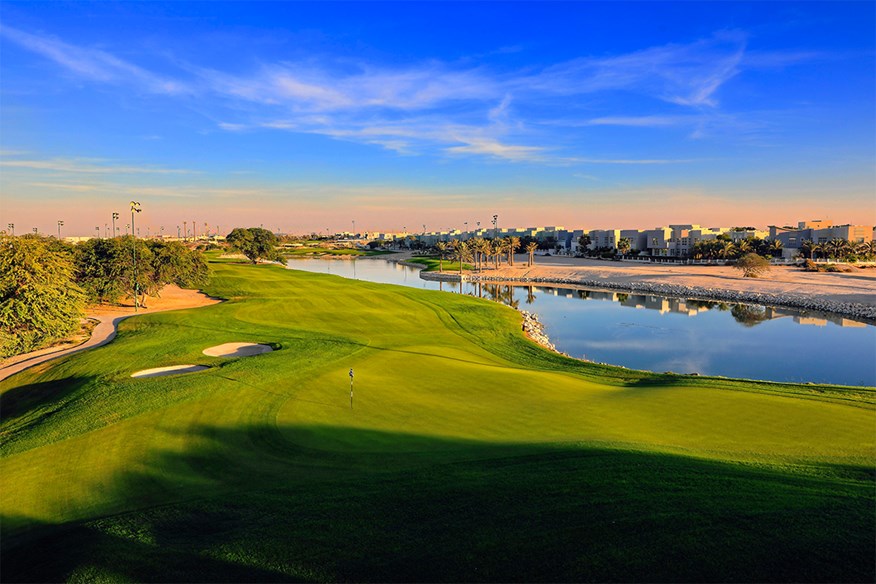
Your guide to the Middle East – Best of the rest
Dubai and Abu Dhabi might dominate the Middle East scene in many ways but there are some exceptional golf trips waiting to be enjoyed outside the UAE.
Oman is certainly one, with a more authentic Arabian experience than in the UAE, allied to epic off-course attractions and some terrific golf. It blows you away with Wadi Shab (a beautiful river canyon), Bimmah Sinkhole (an amazing well the size of a circus ring that you can swim in), and Jebel Akhdar (a truly breathtaking mountain range). You can snorkel in the famous Daymaniyat Islands, luxuriate in the fabulous Kempinski Al Mouj, and take a day trip to sub-tropical Samanah.
On the course, Almouj is so good it could easily be the No.1 course on this list, mixing a spectacular ocean setting with the most enjoyable Greg Norman design I’ve played.
It is far from a single-course destination though, with La Vie (formerly Muscat Hills), Ghala, and Jebel Sifah as the back-ups.
You can actually drive to Oman from Dubai rather than flying there, but while that is a fairly long trip south-east, taking a hire car due east from Dubai and taking in Ras Al Khaimah and Ajman is very easy as they are on the ‘right’ side of DXB airport.
‘ROYAL CLUB OF BAHRAIN IS ONE OF THE REGION’S MOST INTERESTING AND UNIQUE COURSES’
Ajman is a tiny emirate that is home to Al Zorah, which nudges aside some big names to make the top 10 of our ranking.
Designed by Nicklaus Design, it opened in 2015 and is set among flowing dunes, native sandy areas, two lakes… and, notably, 1,000,000m² of inland mangroves. This offers the rare golf experience of changing water levels altering how the course plays almost by the hour, with holes squeezed next to 12km of waterfront; as many as two-thirds of its holes are affected. Oh, and the Oberoi that sits right next to the course is one of the finest hotels I’ve ever stayed in.
Ras Al Khaimah has two courses to enjoy, as well as beachfront majesty at the Hilton (really superb), which is right next to the top golf attraction, Al Hamra, host of the European Tour. This is a beautifully manicured course with a really thrilling closing stretch. Comprising lush, velvety fairways that wind between water, bunkers, and mature trees, it was built by charismatic designer Peter Harradine.
It’s backed up by Tower Links, which mixes stout par 4s with sporty affairs and concludes with a super par 5 with a moat guarding the green. It is not a typical resort course, more often intimidatingly narrow than it is open-the-shoulders wide. On a clear day, you also get a view of the truly awesome Hajar Mountains that sit on the border with Oman.
The biggest joy in this job is discovering great golf destinations that usually fly under the radar. Bahrain put a big tick in that box. Royal Club of Bahrain – and everything about my trip there – was absolutely fabulous.
The golf course was designed by Colin Montgomerie in association with European Golf Design’s Robin Hiseman, one of the few modern architects to have a design in our GB&I Top 100. They created one of the region’s most interesting courses – and it is getting even better due to some fine-tuning that’s making it even more entertaining and a little more forgiving.
Its clever architecture is unique for the region and sets it apart, hence a position in our list that some might find unexpected and surprisingly high. We are certain it is good enough to justify its position, however, for it is fun, strategic, thought-provoking, and beautifully presented.
It is part of a sporting club with a wonderful vibe that is a pleasure to be around and hard to leave. That said, if you stay at the nearby Jumeirah Gulf of Bahrain, it’s a little easier! It boasts a beautiful white-sand beach, an immense pool area, a magnificent spa, a first-class gym, elegant bedrooms, and exquisite dining options.
Bahrain can be very lively in the evening if that’s your bag, and you can also go-kart next to the F1 circuit – and do a tour of the control center. Bahrain will not disappoint.
Finally, Qatar is home to two courses we just can’t split on the list. Peter Harradine’s Doha opened in 1998 and offers superb routing and a pleasing blend of exacting and scorable holes enhanced by its best-ever conditioning. There is a visual pleasure from its wide fairways running between sandy waste areas, with lots of Instagrammable skyscraper backdrops. That it’s a long-time European Tour host speaks volumes.
Education City gave the capital Doha a contrasting second course. It was designed by Jose Maria Olazabal and is impeccably conditioned. It’s also a MENA top-20 course.
There are tonnes to do in Qatar: visit the stunning National Museum, have coffee or dinner at the cool Katara Cultural Village, or take a trip on a traditional wooden boat (dhow). Or go on a desert tour in a 4×4 – whose driver will take you dune bashing – then to the inland sea, then to dinner at a desert camp. Or wander around Souq Waqif, the ‘standing market’, for a sense of old Doha. You really won’t have enough hours in the day.
Out of this world
Jordan is probably my favorite country in the world, thanks to its off-course attractions of the captivating city of Amman, the astonishing mountainous desert of Wadi Rum, and Petra, one of the world’s most popular and epic tourist destinations. Ayla Golf is in Aqaba in the south and is a super Greg Norman design that’s part of a high-caliber tourist development. An unbeatable experience.
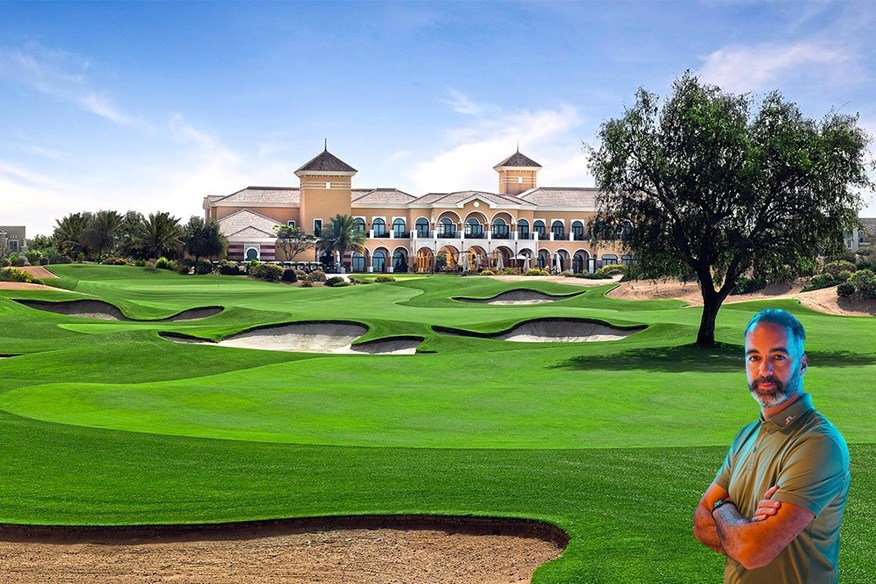
My Dubai
Former European Tour player Zane Scotland enjoys the Middle East so much, he’s just moved there. This is his take on the region…
I played the MENA Tour from its inception, which was 2011, and it was a bit beyond its time really. It was set up by the Emirati behind the Dubai Desert Classic and was intended to help develop golf in the region by bringing in pros from established parts of the golf world.
I had some great times on it and got a lifetime membership, having won 10 times. It was when I was coming back from a serious injury and it was great fun traveling all around the region.
So, I saw a lot of the courses, and the thing about Dubai and the UAE, in general, is that the level is just incredibly consistent; I wouldn’t argue with anyone too long about which is the best or even the second or third best.
‘ERNIE MUST HAVE DESIGNED THE ELS WHEN HE WAS PLAYING WELL. IT’S AN ABSOLUTE BEAST’
The Majlis has all the history and is an old-school type of course with dog legs, tree-lined in places, a bit tighter perhaps. Then you have Trump Dubai, which is a modern beauty where you can tee it a bit higher and let it rip. It’s just so much fun for the amateur golfer, from tee to green.

All the good players like The Els Club because you have to position your ball off the tee, the greens are slick and there are steep run-off areas. If you miss them, there’s trepidation about your next shot. You have to think about which side you miss it on.
It’s up there as the best test, along with Saadiyat Beach, although I’ve heard that is being re-routed so it might change it…
The Els is the most challenging overall. If I brought friends here on holiday or my dad, we’d go to The Els, but with the caveat that you might get a bit beaten up. But strong players love it. You cannot miss a beat there. Ernie clearly designed it when he was playing really, really well – because that place can be an absolute beast!
Funnily enough, Saadiyat and Els are great spots after the round too. The terrace out the back at Saadiyat is really nice, looking down the practice ground in the evening with the music on low. Similar for The Els, overlooking 9 and 18 with the sun setting is another really nice spot with nice ambience and vibe.
I’ve been very fortunate in the last few winters to be the golf correspondent for Dubai Eye radio and also to work alongside Iain Carter at the DP World Championship for the BBC. Sometimes I have to pinch myself to call it work. Thursday and Friday I’ll walk the course and call in to the radio station, then on the weekend Robbie Greenfield and Chris McHardy come down and set up a Dubai Eye pop-up booth, usually in hospitality, so we get to watch the players come in and finish. And that’s work!
Now, after 14 years of coming to the UAE, I’m moving here on a more permanent basis as director of golf for Five Iron Golf, which is very modern golf and which excites me – especially as an R&A diversity ambassador.
It is making golf more accessible while maintaining the aspirational element. Five Iron have 30+ locations worldwide and this is the first in the Middle East. In true Dubai style, it is the biggest one, with 17 Trackmans, an indoor putting green, a gym, a VIP lounge, a steam room, a sauna, and mini golf. There’s a real vibe to it. It really has something for everyone.
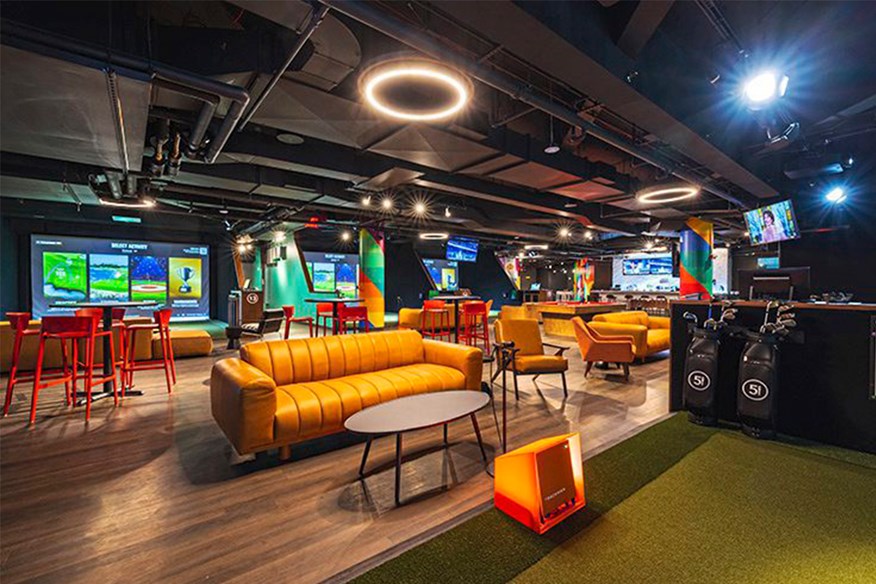
It’s a golfer’s dream – you can do the serious stuff with Trackman and get your numbers, while Callaway are an investor and have given us all their Ai Smoke clubs. You also have the well-being element of the gym, steam room, and healthy breakfasts. But by 7.30 pm, the music is turned up and there is a really good atmosphere, along with the ‘hops and grapes’…
It’s in a really good location in the marina where a lot of people live, work or stay on holiday. If you want to try golf, improve your golf, or play golf and get a load of extras, it really is the perfect place.
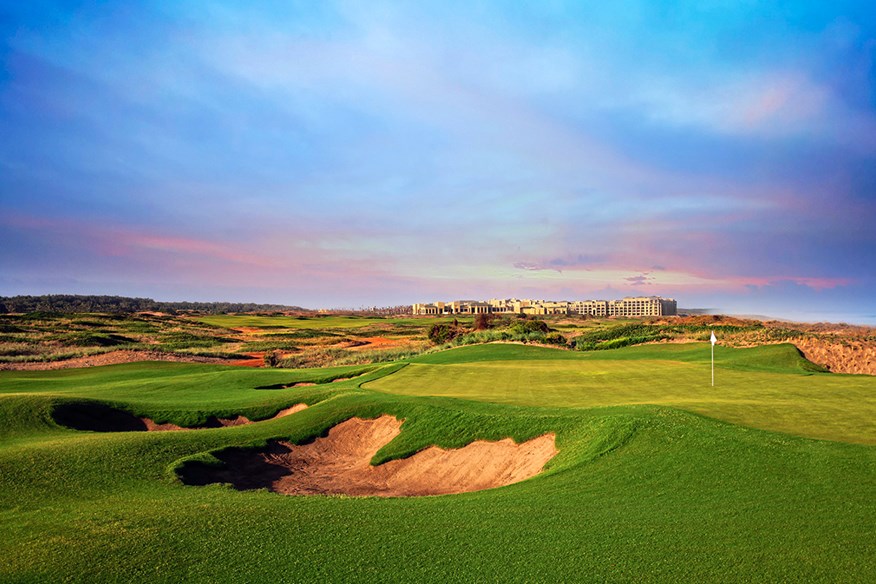
Your guide to Morocco
It is possibly foolhardy to try to condense the attractions and options of Morocco into just a few pages.
This extraordinary country has so many alluring places to visit, from its largest city Casablanca – a must for film lovers – to sprawling Tangier. Or Ouarzazate, also a noted film-making location, where Gladiator, among many others, was shot, to the beach resorts of Agadir and Tarfaya. Or UNESCO World Heritage Site El Jadida to mystical Marrakesh, with its myriad souks, bars and restaurants and epic ‘Big Square’.
The good news is that the courses are largely collected in three key areas: Marrakesh, Rabat & Tangier, and the Atlantic coast down to Agadir.
Atlantic coast
We will start in Agadir in the south. Royal Palace of Agadir is one of the world’s most exclusive clubs and its course was laid out by Cabell Robinson under the Robert Trent Jones umbrella. It combines a seaside setting with interesting architecture and flawless conditioning. It’s utterly fabulous… but few can play it.
There’s better news at Tazegzout, just north of Agadir. It is part of the Taghazout resort and was designed by Kyle Phillips. It hugs the coast spectacularly for a number of holes while others are cut through an indigenous Argan forest. This clifftop course sits 80m above sea level and its final three are terrific.
There are four more Agadir courses in the list, showing its depth for a holiday. Golf du Soleil was opened in 1999 and comprises lakes and waterfalls as well as tamarind trees, mimosas and eucalyptus, but its playing surfaces are happily wide.
Golf Les Dunes’ yellow and red loops were designed by Robinson on sandy, often wooded land, while Golf de l’Ocean is three loops of nine by Belt Collins.
Royal Agadir dates back to 1961, when a Scotsman, a Mr Wilson, created one hole on wasteland. Colonel Major Kamili added eight more and they survive today with a backdrop of pine and eucalyptus aromas.
Moving north, you come to Mogador near Essaouira. Its North course by Gary Player opened in 2009 and boasts wide playing corridors, Atlantic views and a super back nine.
Next stop is the El Jadida area and one of the stars of North African golf, Mazagan Beach. It was also designed by Player and opened in 2009. The Black Knight created a thrilling slice of holiday golf, especially the holes alongside the coast.
It has a ‘look’ of a links but is a very lush experience and can stretch to more than 7,000 yards. With the coastal breeze a regular feature, it is a serious examination.
After a steady start, the pulse raises towards of the back nine, the dog-leg 7th taking you towards the ocean then the 8th and 9th guiding you back to the clubhouse along the beach. The back nine starts solidly but again the highlights come in its second half, with the tempo rising from the fine par-3 15th. From that point, the ocean is your companion to a great climax among the dunes.
It is a tremendous all-round resort too, and you can very happily base yourself here for your entire trip (see ‘Off-course guide’ for details).
El Jadida Royal is barely 15 minutes away and is another fine Cabell Robinson design. It sits close to the coast but is largely forested in nature.
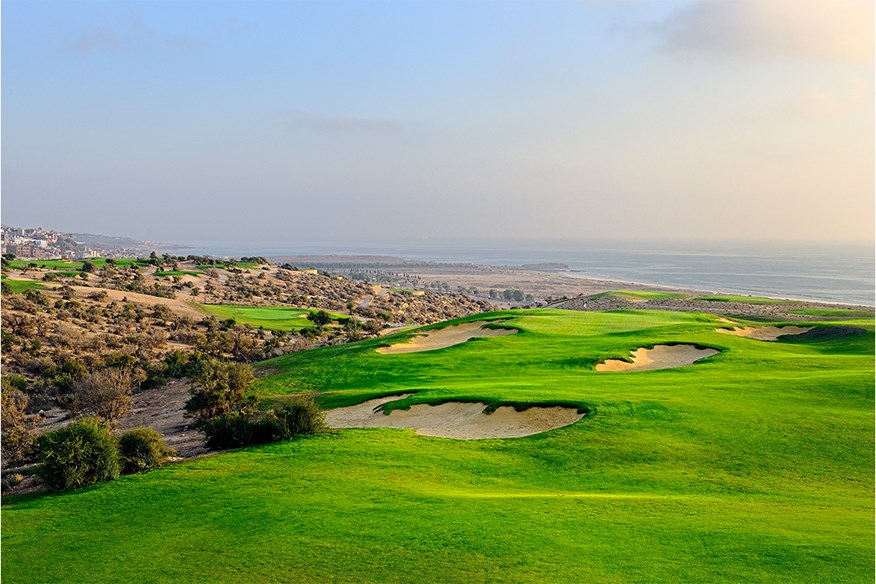
Marrakesh
There are so many courses to choose from here, but Assoufid leads the way, helped by the natural advantage of a more undulating site compared to most in the city.
Opened in 2014, it enjoys a desert setting and plays towards the snow-covered Atlas Mountains on the front nine while the shaaba, a natural dry river, becomes a feature on many holes.
Royal Palm was a very pleasant surprise. We expected a well-groomed course, given it is part of the finest resort in Marrakesh, but it is also full of architectural nuance and an intricate routing by Robinson.
Unlike the rest of the city’s courses, Royal Marrakesh (Green and Red) has bags of pedigree. Founded in 1927, it has 27 holes – 18 on the Old and nine on the New (2008) – that wind between dense corridors of mature trees. It has also been recently renovated to good effect.
Noria rivalled Royal Palm for shock factor. It flies under the radar but trust me, it is distinctive and very entertaining – all clever angles and square greens.
Al Maaden, by Kyle Phillips, is predictably well thought out and has a crazy water-based finish, while Palm Ourika is the sister course of Palm Golf and is a bold, modern course in extremely good condition, with lush, green fairways, large sandy waste areas and the occasional tall palm tree.
Across the road is Samanah, built in 20 himself visited in 2009. It has hosted the Ladies European Tour and is very open with a solid back nine.
Amelkis (Blue and Red) is a pleasant test among water hazards and bunkers while Montgomerie Marrakech was designed by the former Ryder Cup captain in association with European Golf Design.
Rabat & Tangier
There are fewer courses in the north of the country and there tends to be more distance between them, but the quality is high and the variety impressive.
In Rabat, Royal Dar Es Salam has two fine courses. The Red is a Trent Jones masterpiece in a cork oak forest and was restored by James Duncan, the Blue is by Robinson and is a shorter but tighter test.
Three hours’ drive inland on the hills above Ifrane stands the modern masterpiece of Michlifen. Expect rock outcrops, ravines, lakes and contoured greens on this magnificent Jack Nicklaus design that overlooks the Atlas Mountains.
‘ROYAL AGADIR DATES BACK TO 1961 WHEN A SCOTSMAN NAMED MR WILSON CREATED ONE HOLE’
South of Tangier, Al Houara is the youngest course in the list and the one we have least knowledge of – but all reports are very positive, hence its inclusion here. It is a links-looking experience close to the Atlantic coast.
Royal Tangier, from which you get fine views of the rooftops of the ‘White City’, was built in 1914 by Cotton & Pennink.
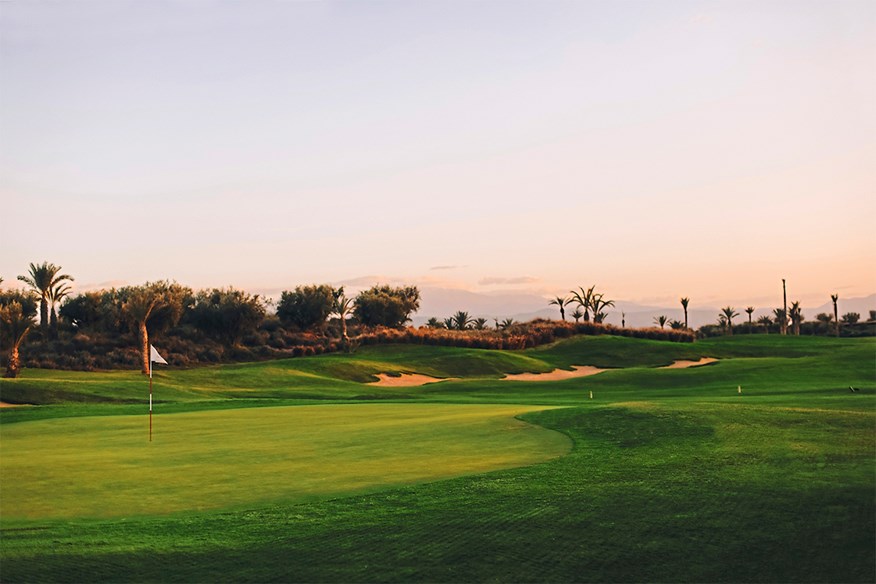
Your off-course guide
Getting there: You can fly to Marrakesh from Liverpool, Stansted and Luton. For the coastal trip, we flew to Agadir from Manchester, with flights also available from Bournemouth, Birmingham, Edinburgh, Luton and Gatwick.
When to go: The summer is hot but not totally unbearable on a UAE level, but October and November plus February and March are perfect for golf.
Where to stay: We had two bases for our Marrakesh trip: Royal Palm in the south-west of the city, an opulent resort with loads of amenities, and Palmeraie Palace, next to the 2nd hole of Palm Golf.
For the coastal trip, the outstanding option is Mazagan Beach, from which you can get to all of the courses on the coast. It is a World Top 100-ranked resort with good reason.
This luxury hotel is situated beside a 7km-long beach and boasts an outdoor swimming pool, casino, and a wealth of activities that include archery, horse riding, tennis, trampolining, pickleball, and kids’ club. A beautiful and comprehensive spa includes special treatments for youngsters.
Each of the spacious guest rooms has a contemporary design with Moroccan features, with some boasting spectacular Atlantic Ocean views. An immense breakfast starts your day in the best possible way and after that you can choose from as many as 15 restaurants and bars throughout the rest of the day – including delicious traditional Moroccan cuisine.
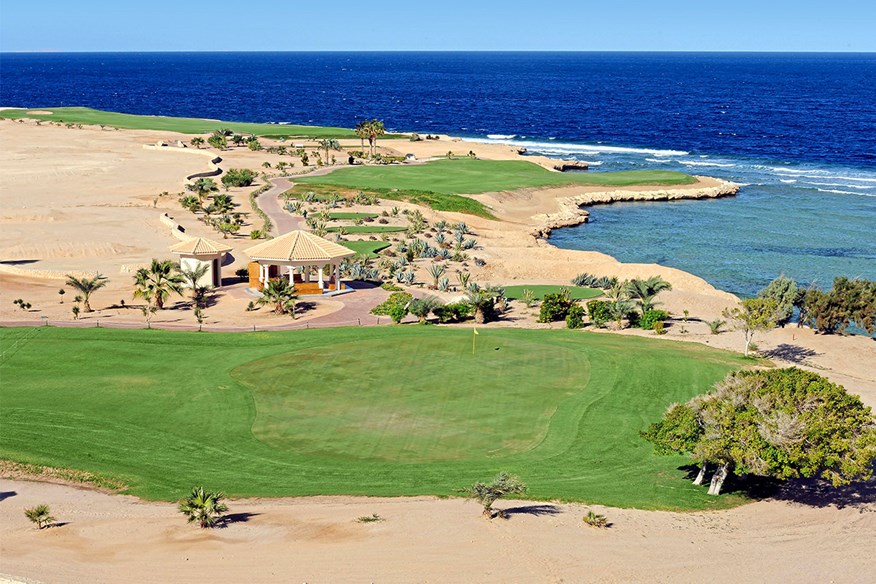
Your guide to Egypt
Your key decision about Egypt is whether you want golf and iconic sightseeing from your break, or golf plus a Red Sea beach holiday. Cairo offers the former, Hurghada the latter. Both do so in exceptional ways.
You don’t need me to explain the non-golf appeal of Cairo but suffice to say it is as vibrant, bustling and enjoyably chaotic a city as you might imagine. A boat trip on the Nile, the markets, Tahrir Square, the immense Egyptian Museum and, of course, the Pyramids are bucket-list stuff.
A couple of Cairo tips before we move on to the golf. The first is that I’ve driven all over the world and Cairo is up there with the trickiest. It’s more stock car racing than driving. Ubers – albeit in some fairly vintage cars! – are super cheap, so use them unless you are very confident behind the wheel.
The second is that you can add a day trip (via a short flight) to the truly epic Luxor. I’d have that as an essential part of any trip to Egypt, particularly going from Hurghada.
As for the golf, Cairo has several high-end courses, conveniently located in two clusters.
‘EGYPT’S OPTIONS BOIL DOWN TO CAIRO OR HURGHADA – BOTH OFFER EXCEPTIONAL EXPERIENCES’
On the western suburbs of the city, Tim Lobb’s cerebral design at New Giza, in the shadow of the pyramids, is our No.1 in Egypt. It ticks all the boxes: playable, atmospheric, strategic and well-presented.
The Allegria is another pedigree course, a Greg Norman design within one of Cairo’s most exclusive residential communities, where undulating fairways slither between and over lakes, streams, rocks and vegetation.
Palm Hills (A and C) is by John Sandford, who did much of the work on Palm Hills working under the Nicklaus Design name. It features numerous water hazards and offers a good test.
And Dreamland (Championship) was initially laid out by Karl Litten, who also laid out Emirates (Majlis), and later redesigned by David Jones of Belek fame. Five lakes feature strongly.
In the east of the city in New Cairo, Katameya Dunes is a Nick Faldo design with lush velvet fairways sliding between sandy wastelands.
Nearby Katameya Heights was designed by Frenchman Yves Bureau in the early 1990s and water is key to a fine closing hole.
Robert Trent Jones Jnr’s Madinaty is a terrific recent addition that is noted among the panel for its excellent condition. This exacting course travels over undulating fairways lined by water and sand.
The fourth course in this pocket is Peter Harradine’s Mirage City, which has a number of water hazards to negotiate.
There are three main resorts in the Hurghada area and all sit within vast holiday complexes or even, in the case of El Gouna, a miniature city. As a result, each course is surrounded by a plethora of amenities and attractions, with several excellent hotels to choose from.
Somabay is the most stylish resort of the three and is categorically the most spectacular in an aesthetic sense.
Laid out on a triangle of reclaimed desert that pokes into the Red Sea, it is therefore inevitably characterised by gorgeous beaches and Red Sea views.
The course within this swish resort, next to the Cascades Hotel, was designed by Gary Player and its highlights arrive at the 5th and 6th and then the 14th and 15th – the holes closest to the sea.
Mixing par 3s over the edge of the water or directly down towards it with sporty par 4s that are beautiful, seemingly innocuous holes with the ability to bite, these are some of the very best of the Red Sea Riviera.
The rest of Somabay’s course sees lush green fairways sit distinctively against the blankets of white-sand desert in between.
There are many hotels to choose from, but we stayed at Cascades and it was a great choice – see ‘Off-course guide’ below.
El Gouna is a Red Sea attempt at Venice by virtue of the 36km of lagoons that wind between the land on which sits an array of attractive burnt orange, red, beige and yellow buildings.
The course is a Gene Bates and Fred Couples design routed among the lagoons, even if in truth they are only in play for the very wayward shot. The bunkers are low-lipped affairs and the greens are in good nick, so it’s unlikely to beat you up. Most holes play to a backdrop of the Red Sea or the mountains.
Thirty minutes south of the airport, Madinat Makadi was built in 1998. There are lots of 4- and 5-star hotels to choose from, while the John Sanford-designed course is a mix of sand, water and palms. There are 1,300 palm trees, which sounds a lot, but in fact there is generally an open feel to this undulating track and you’ll have expansive views as a result. Five of its holes overlook the Red Sea and three boast a view of the three salt water lakes that are connected by two cascades.
Put simply, you can easily play all three courses on the same trip and be in the taxi or transfer van for no more than an hour. A terrific golf trip is waiting to be savoured, under the sun for 52 weeks of the year.
Your off-course guide
Getting there: Flights go to Cairo from Heathrow, Stansted and Manchester, while Hurghada is really well served with direct flights from Glasgow, Manchester, Bristol, Liverpool, Birmingham, Nottingham, Belfast, Gatwick and Stansted.
When to go: The summer is hot but not totally unbearable on a UAE level, but October and November plus February and March are perfect for golf.
Where to stay: Cairo naturally has numerous options to suit all budgets, but if you want a play-and-stay, we really enjoyed JW Marriott, which is attached to Mirage City.
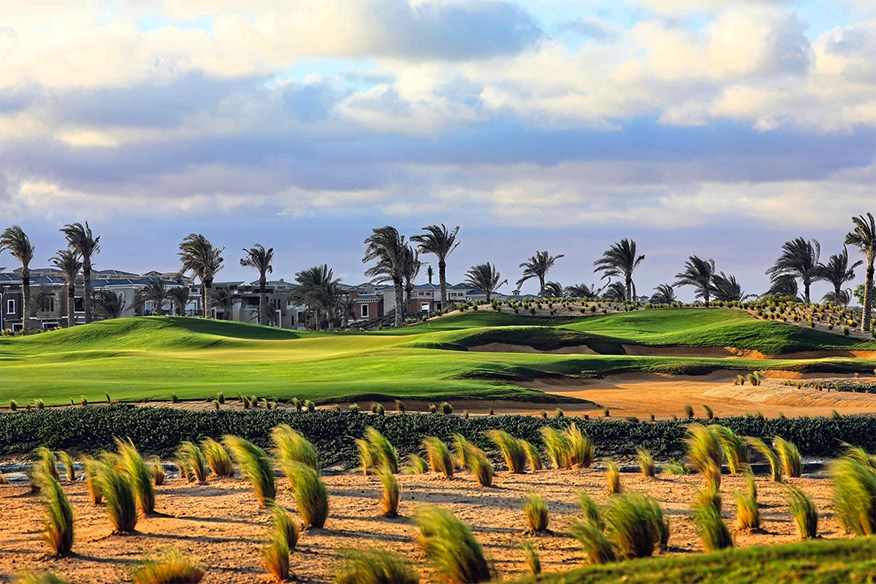
In Hurghada, all three resorts have several hotels but the pick is Somabay. We stayed longest at Cascades, which is a wonderful base for couples, families, or single-sex groups. It has stylish, rooms, beach access, a superb swimming pool area, spa, and therapy center, plus excellent dining both in the hotel and in the wider resort. It has a peerless short-game area and Par 3, then consider the incredible non-golf activities on offer here. In fact, there are too many to mention but some of the most appealing are go-karting, a waterpark, horse riding, a racquet club with floodlit tennis courts and squash courts. Water sports include diving, snorkeling, sailing, windsurfing, and kite surfing, with the world-famous Red Sea coral reefs easily accessible from a jetty that extends from the Dive Centre to the house reef. Essentially, whatever you want to do, you can do it from the Cascades Hotel within the Somabay resort.
Also consider
Jolie Ville in Sharm El Sheikh – host of the European Challenge and Seniors tours – is a flat, easy-walking course with 18 man-made lakes. The Tim Lobb-designed El Ein Bay is located at coastal Ain Sohkna.
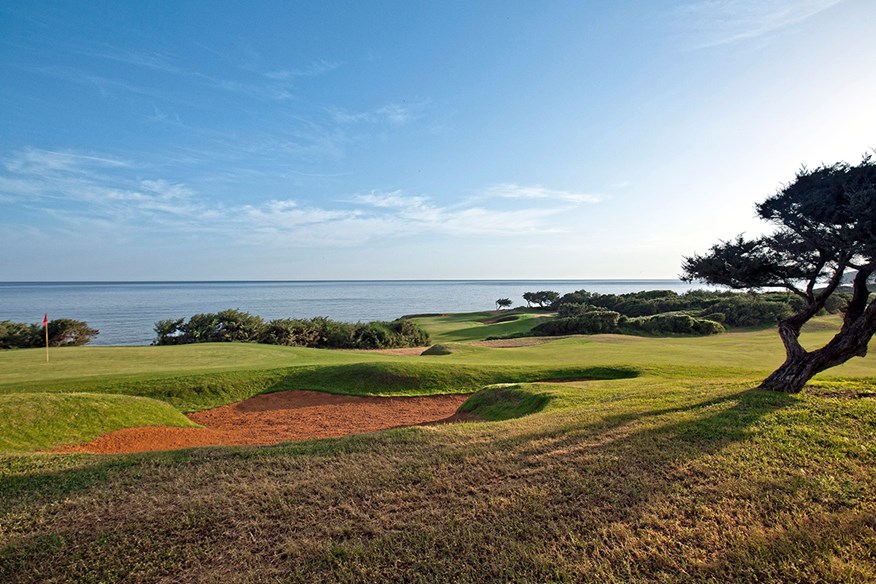
Your guide to Tunisia
Most of Tunisia’s golf lies down its coast in the cities of Hammamet, Sousse, Monastir, and the capital, Tunis.
Hammamet is home to the country’s No.1, Yasmine Valley, a Ron Fream design with large bunkers, tiered greens, and water.
The Citrus Club has 45 holes, with La Foret the main attraction. Also designed by Fream, pine trees frame much of it, as its name suggests.
Les Oliviers in contrast – but again aptly named – is routed among an olive grove, and its open nature means there is a frequent and often welcome breeze.
In the capital Tunis, a little further north, The Residence is the standout, a modern Robert Trent Jones Jnr course that is part of a high-end resort on Gammarth seafront.
Carthage is a sporty and historic course northeast of Tunisia that dates back almost a century.
Moving south to holiday hotspot Sousse brings us to the El Kantaoui club, whose Panorama course is the newer and, in our view, better of the two options. Fream designed it on undulating land with regular elevation changes. The Sea lives up to its name with a fine coastal stretch coming home.
Flamingo is south of Sousse in Monastir. Expect clever routing by that man Fream again, this time among olive trees and on undulating fairways overlooking Monastir lakes.
Finally, Tabarka is in the north west, next to the border with Algeria. Seven of its front nine play around the gulf of Tabarka while others move between oak and pine.
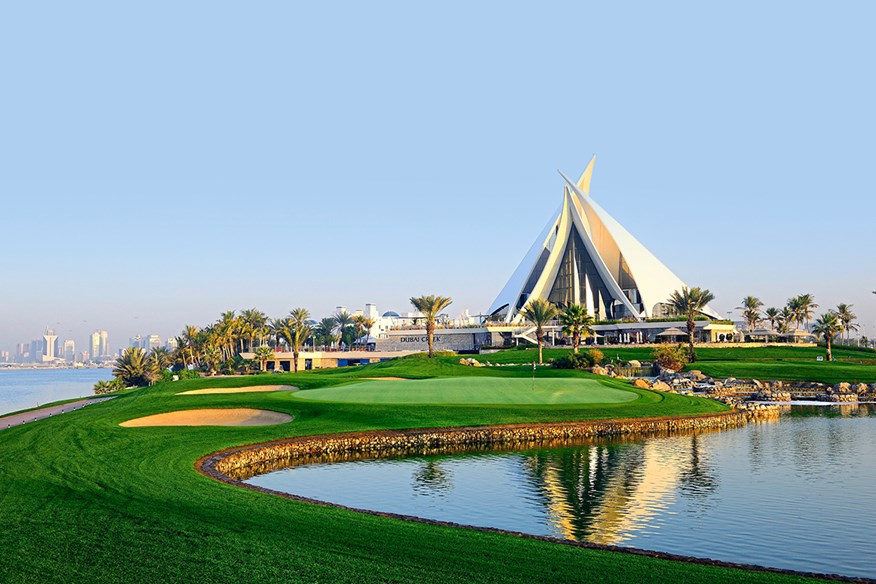
The Mena list in full
1. Yas Links Abu Dhabi
2. Al Mouj Oman
3. Emirates (Majlis) Dubai
4. Royal Palace of Agadir Morocco
5. Trump Dubai Dubai
6. Els Club Dubai
7. Jumeirah (Earth) Dubai
8. Al Zorah Ajman
9. Michlifen Morocco
10. Saadiyat Beach Abu Dhabi
11. Dubai Creek Dubai
12. Mazagan Beach Morocco
13. Royal Dar Es Salam (Red) Morocco
14. Dubai Hills Dubai
15. Abu Dhabi (National) Abu Dhabi
16. Education City Qatar
17. Doha Qatar
18. Somabay Egypt
19. New Giza Egypt
20. Jumeirah (Fire) Dubai
21. The Allegria Egypt
22. Assoufid Morocco
23. Katameya Dunes Egypt
24. Tazegzout Morocco
25. Royal Greens Saudi Arabia
26. Al Houara Morocco
27. Royal Club Bahrain (Montgomerie) Bahrain
28. Al Ain Abu Dhabi
29. Royal Palm Marrakesh
30. Royal Dar Es Salam (Blue) Morocco
31. Al Hamra Ras Al Khaimah
32. Arabian Ranches Dubai
33. Madinaty Egypt
34. Emirates (Faldo) Dubai
35. La Vie Muscat Oman
36. Ayla Jordan
37. Royal Marrakesh (Green & Red) Morocco
38. Yasmine Valley Tunisia
39. El Ein Bay (Sokhna) Egypt
40. Noria Morocco
41. Citrus (La Foret) Tunisia
42. Residence (Tunis) Tunisia
43. Madinat Makadi Egypt
44. Al Maaden Morocco
45. Montgomerie Dubai Dubai
46. Palm Ourika Morocco
47. Tabarka Tunisia
48. Mogador Morocco
49. El Jadida Royal Morocco
50. Samanah Morocco
51. Katameya Heights Egypt
52. El Gouna Egypt
53. Yas Acres Abu Dhabi
54. Nofa Saudi Arabia
55. Golf du Soleil Morocco
56. Riyadh Saudi Arabia
57. Amelkis (Blue and Red) Morocco
58. Palm Hills (A and C) Egypt
59. Sahara Kuwait
60 Citrus (Les Oliviers) Tunisia
61. El Kantaoui (Panorama) Tunisia
62. Mirage City Egypt
63. El Kantaoui (Sea) Tunisia
64. Dreamland (Cmpshp) Egypt
65. Palmeraie Morocco
66. Tower Links Ras Al Khaimah
67. Royal Anfa Mohammedia Morocco
68. Sharjah Golf & Shooting Sharjah
69. Jebel Sifah Oman
70. City Golf Abu Dhabi
71. Montgomerie Marrakesh Morocco
72. Flamingo Monastir Tunisia
73. Mena House Egypt
74. Carthage Tunisia
75. The Track Meydan Dubai
76. Jebel Ali Dubai
77. Royal Tangier Morocco
78. Ghala Oman
79. Golf Les Dunes (Ylw/Red) Morocco
80. Royal Agadir Morocco
-
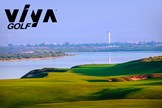 Yas Links Viya Golf
Yas Links Viya Golf
-
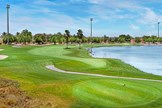 AL AIN
AL AIN
-
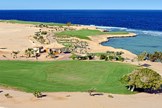 Somabay Golf Course
Somabay Golf Course
-
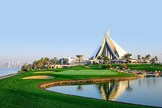 Dubai Creek
Dubai Creek
-
 Dubai Creek Viya Golf
Dubai Creek Viya Golf
-
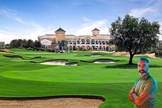 Zane Scotland's guide to Dubai
Zane Scotland's guide to Dubai
-
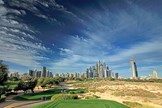 Emirates Majlis Golf Course
Emirates Majlis Golf Course
-
 Five Iron Golf boasts an impressive 17 Trackmans
Five Iron Golf boasts an impressive 17 Trackmans
-
 Five Iron Golf Dubai
Five Iron Golf Dubai
-
 Mazagan Beach
Mazagan Beach
-
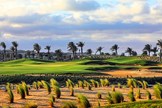 New Giza Golf Course
New Giza Golf Course
-
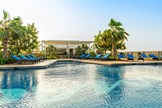 Radisson Damac Hills Hotel
Radisson Damac Hills Hotel
-
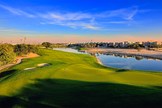 The Bahrain Championship is held at the Royal Golf Club in Bahrain.
The Bahrain Championship is held at the Royal Golf Club in Bahrain.
-
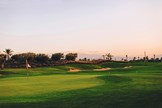 Royal Palm Golf Course
Royal Palm Golf Course
-
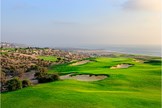 Tazegzout Morocco
Tazegzout Morocco
-
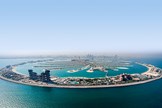 The Palm Dubai
The Palm Dubai
-
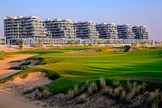 Trump Dubai 15th Hole
Trump Dubai 15th Hole
-
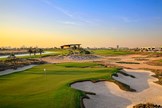 Trump Dubai 17th Hole
Trump Dubai 17th Hole
-
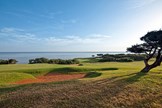 Tabarka Tunisia
Tabarka Tunisia
-
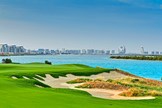 Yas Troon Abu Dhabi
Yas Troon Abu Dhabi
